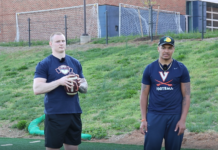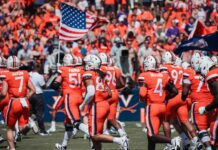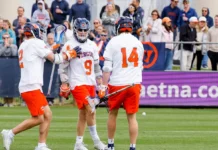The Virginia Cavaliers football team suffered their first defeat of the season on Saturday, falling at home to the Indiana Hoosiers by a score of 34-17. Virginia played fairly well in a game that felt much closer than the final score, but untimely mistakes and a lack of explosive plays eventually did the Cavaliers in. Below are my key takeaways from the game, as well as a look forward to next week’s matchup against UConn.
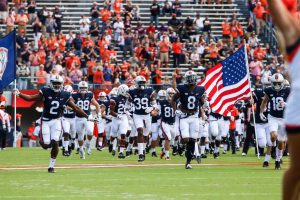
Key Takeaways From the Game:
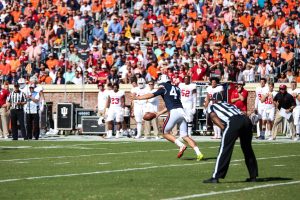
Special Teams Struggles: In what’s becoming a troubling trend, Virginia struggled on special teams once again in Week 2. The Cavaliers attempted a fake field goal in the first quarter but failed to convert, and things seemed to go downhill from there. Both the kickoff and punt coverage teams had a rough day – Indiana averaged over 23 yards per return on their way to tallying 163 total return yards, highlighted by a 44-yard punt return touchdown from junior WR J-Shun Harris. Freshman kicker AJ Meija converted his first field goal of the season and nailed both extra points, but every other component of special teams seemed to struggle.
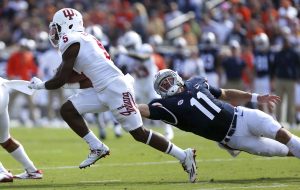
Punting was especially problematic, as the Cavaliers were unable to flip the field for much of the game. Junior punter Lester Coleman had two punts of 30 yards or less, and multiple other line-drive kicks allowed for long returns by Harris II. Starting field position was a major factor in a game featuring two inefficient offenses, and too often the Hoosiers were allowed to start drives on the UVa half of the field. Solid special teams play can be the difference in close games, and head coach Bronco Mendenhall and special teams coordinator Kelly Poppinga must get things straightened out if the Cavaliers hope to make some noise in conference play.
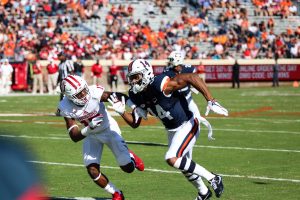
Lack of Precision in the Passing Game: The stat sheet showed a solid, if unspectacular, day for senior quarterback Kurt Benkert: 39-of-66 for 259 yards, a touchdown, and no turnovers, all while only getting sacked once. But the tape showed a different story. Offensive coordinator Robert Anae seemed to prioritize going deep early, but Benkert struggled with inaccuracy and a lack of open receivers downfield. His accuracy troubles extended to all areas of the field, although he wasn’t helped by a number of untimely drops from Virginia receivers. Junior tight end Evan Butts was a threat over the middle, and junior wide receiver Olamide Zaccheaus had 12 receptions, but it was a generally sloppy day for the Virginia passing attack. The Cavaliers showed exciting potential last week, and a deep receiving corps gives Anae a number of aerial weapons to choose from. But the execution simply must improve, particularly since Virginia will rely heavily on Benkert & Co. with the running game continuing to struggle.
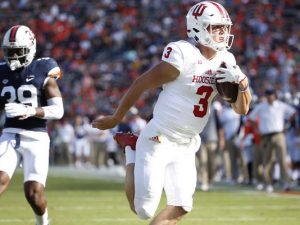
Explosive Plays: This was, quite frankly, a bit of a weird game for the Cavaliers. The stat sheet looked good – UVa held the Hoosiers to just 318 yards of offense, had zero turnovers yet again, held the ball for nearly ten more minutes than Indiana, had fewer penalties and penalty yards, and foiled the Indiana game plan so badly that Indiana’s senior starting quarterback Richard Lagow was pulled for redshirt freshman back-up Peyton Ramsey in the first quarter. But the Hoosiers had all the game’s explosive plays, and it ended up being the difference. Twice in the second half Indiana was able to take advantage of excellent starting field position and score in one play. Ramsey found junior wide receiver Donavan Hale for a 32-yard touchdown at the end of the third quarter, and Harris’ punt return touchdown halfway through the fourth quarter sealed the game for the Hoosiers.
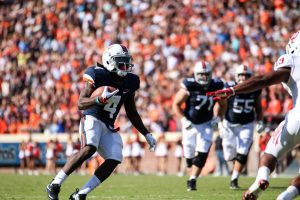
More problematically, Virginia was unable to counter with quick-strikes of their own. The Cavaliers averaged over 8 plays per scoring drive, and only had one play longer than 20 yards. They showed an ability to string together short passes to elongate drives, which was necessary given the lack of a consistent group game, but a plodding and predictable offense isn’t very useful when a team is down the entire second half.
Player of the Game: ILB Micah Kiser
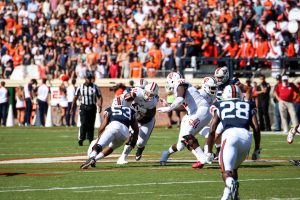
Sophmore OLB Jordan Mack had a career-high 17 tackles, including half a sack, while senior safety Quin Blanding added 12 tackles of his own. But senior ILB Micah Kiser stood out on Saturday. He shook off an early knee injury and racked up 14 tackles, 2 sacks, and a pass deflection. Defensive coordinator Nick Howell dialed up a number of linebacker blitzes to help generate pressure, and Kiser wreaked havoc in the Indiana backfield all afternoon. He saved his best moments for when they mattered most – one of his sacks forced a punt late in the third quarter, and the pass deflection came at the goal line on 4th down and prevented an Indiana touchdown. Virginia’s offense struggled to get things going, but the play of the defense allowed the Hoos to keep things competitive.
Next Week: Saturday, September 16 vs. UConn, 12:00 EST at Scott Stadium
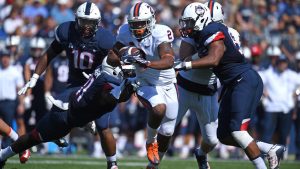
Virginia will face the UConn Huskies this Saturday, and they’ll be looking to close out this three-game home stand with a win. The Cavaliers will be seeking revenge for last year’s matchup, when they were edged 13-10 by the Huskies in Hartford after a last-second field goal to tie the game was pushed just wide. UConn comes into this game after an unexpected bye week, as their game against South Florida, originally scheduled for September 9th, was canceled due to concerns about Hurricane Irma.
Regardless, this is a game that Virginia should feel good about. UConn struggled in Week 1 against FCS foe Holy Cross, squeaking out a 27-20 victory after trailing by 13 at halftime. The Cavalier offense should have an opportunity to show out: Holy Cross put up 447 total yards against a weak and inexperience Husky defense. Something to watch: can UVa get the ground game going? An average of 2.6 yards per rush simply will not cut it against ACC opponents – this is the week to right the ship and establish a consistent rushing attack.








